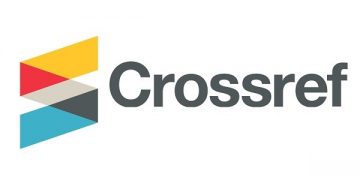Meningkatkan Kebugaran Jasmani Menggunakan Permainan pada Siswa Kelas VI Sekolah Dasar Negeri 2 Pojok Kota kediri
DOI:
https://doi.org/10.61722/jssr.v3i3.4802Keywords:
Fitness, Physical, Games.Abstract
Sports lessons are primarily part of the entire education system. The purpose of sports education is not only in the physical domain, but also aspects of health, physical form, skills for critical thinking, emotional stability, social skills, discussion, and ethical behavior through physical and sports activities. Sports lessons give students the opportunity to participate in a systematic, oriented, planned learning experience through physical activity, games and systematic movements. Based on the above explanation, the author conducted a study on improving the title of physical forms by relying on micro-class students to study physical education at Koljok 2 Elementary School in Kediri city. This research was conducted as educational research (Classic Action Research). The test results for February 19, 2025 after learning using the game approach, the results in cycle I for male students increased to 2.15 "while for female students increased to 2.21", while the results on February 26, 2025 in Cycle II male students increased to 2.12 "and female students increased to 2.17". Thus it can be concluded that students' abilities in mastering physical fitness learning materials through the pick kun move game approach and the police catch criminals can improve the physical fitness of grade VI students at Pojok 2 Elementary School, Kediri City with a 600 m running test.
References
Arikunto, S. (2015). Penelitian Tindakan Kelas. Jakarta: Bumi Aksara.
Agustina, T. (2017). Metodologi Penelitian Pendidikan. Jakarta: Rajawali Pers.
Agung, Iskandar . 2012. Panduan Penelitian Tindakan Kelas bagi Guru. Jakarta: Bestari Buana Murni.
Darmawan I. 2017. Upaya Meningkatkan Kebugaran Jasmani Siswa melalui Penjas. JIP. Vol.7 No. 2:143-154.
Donald, H. (2017). Upaya Mengoptimalkan Kemampuan Lari Cepat dengan Menggunakan Alat Bantu Pembelajaran Pendidikan Jasmani. Jurnal Kependidikan: Jurnal HasilPenelitian dan Kajian Kepustakaan di Bidang Pendidikan, Pengajaran danPembelajaran, 3(2). doi:https://doi.org/10.33394/jk.v3i2.566
Gallahue, D. L., & Donnelly, F. C. (2019). Developmental Physical Education for All Children. Human Kinetics.
Gustiawati, R (2019). Pengembangan Pendekatan Evaluasi The Most Significant Change Technique Dalam Pembelajaran Pendidika Jasmani Olahraga dan Kesehatan. Jurnal Pendidikan Jasmani dan Olahraga, Volume 18 No 2
Hidayat, A. S. (2015). Hubungan Tingkat Kebugaran Jasmani Terhadap Prestasi Akademik. Jurnal Pendidikan Olahraga Dan Kesehatan, 03, 154– 159.
Kementerian Pendidikan, Kebudayaan, Riset, dan Teknologi. (2022). Capaian Pembelajaran Pendidikan Jasmani Olahraga dan Kesehatan (PJOK) dalam Kurikulum Merdeka. Jakarta: Kemdikbudristek.
Metzler, M. (2017). Instructional models in physical education. Routledge
Paramitha, S.T, Anggara, L.E.(2018). Revitalisasi Pendidikan Jasmani untuk Anak Usia Dini melalui Penerapan Model Bermain Edukatif Berbasis Alam. Jurnal Pendidikan Jasmani dan Olahraga JPJO 3 (1) (2018) 41-51.
Siedentop, D. (2022). Introduction to Physical Education, Fitness, and Sport.
Wicaksono, G. H. (2019). Kreativitas Guru Penjas Terhadap Proses Pembelajaran Penjas Di Sekolah Menengah Pertama Negeri Sekecamatan Kebumen Kabupaten Kebumen 2018. Jurnal Pendidikan Kesehatan Rekreasi. 5(2), 95-100. 2011).
Downloads
Published
Issue
Section
License
Copyright (c) 2025 JOURNAL SAINS STUDENT RESEARCH

This work is licensed under a Creative Commons Attribution-ShareAlike 4.0 International License.













